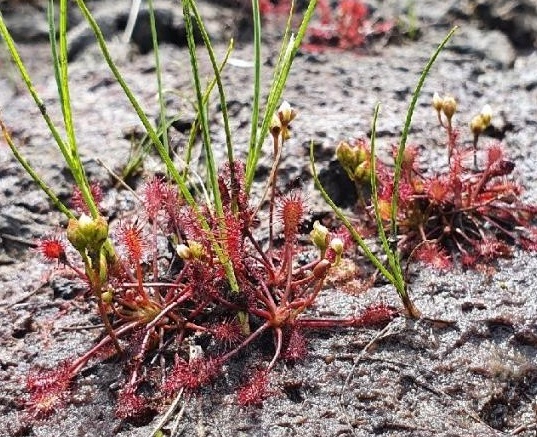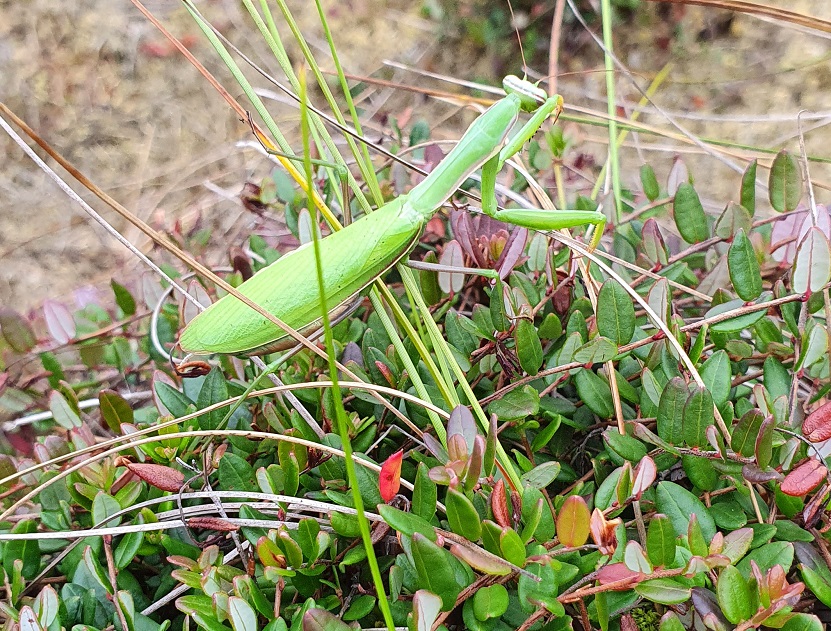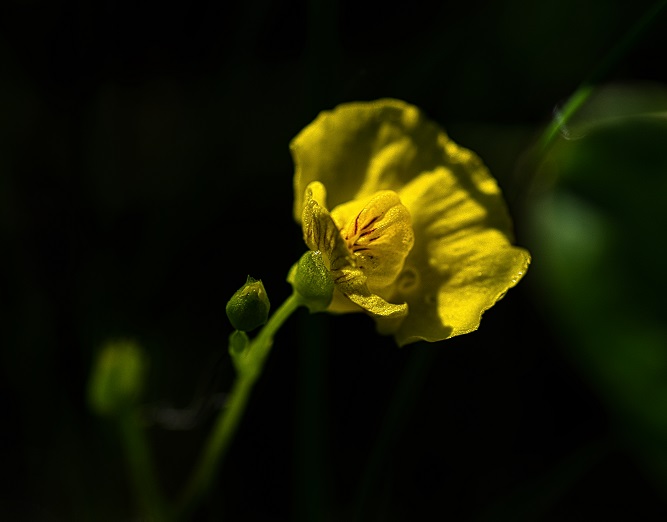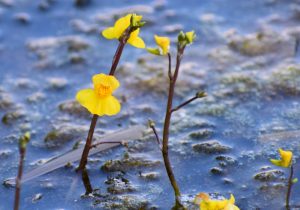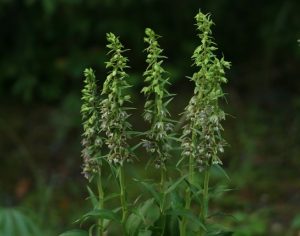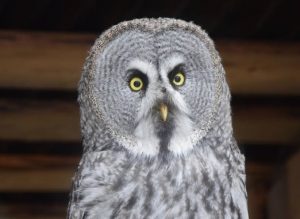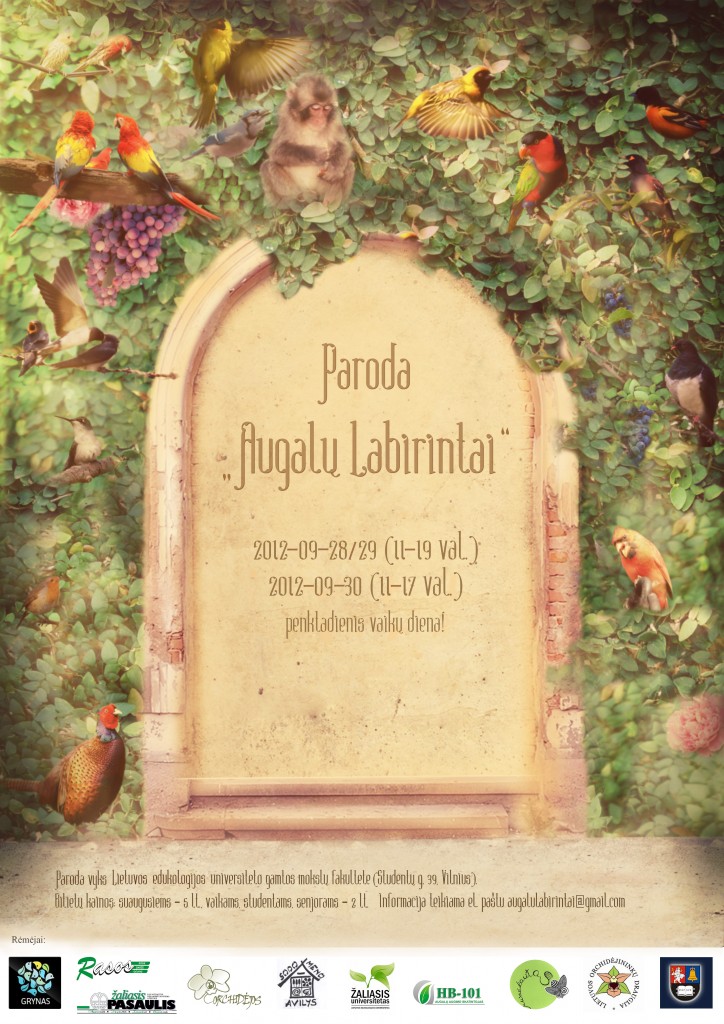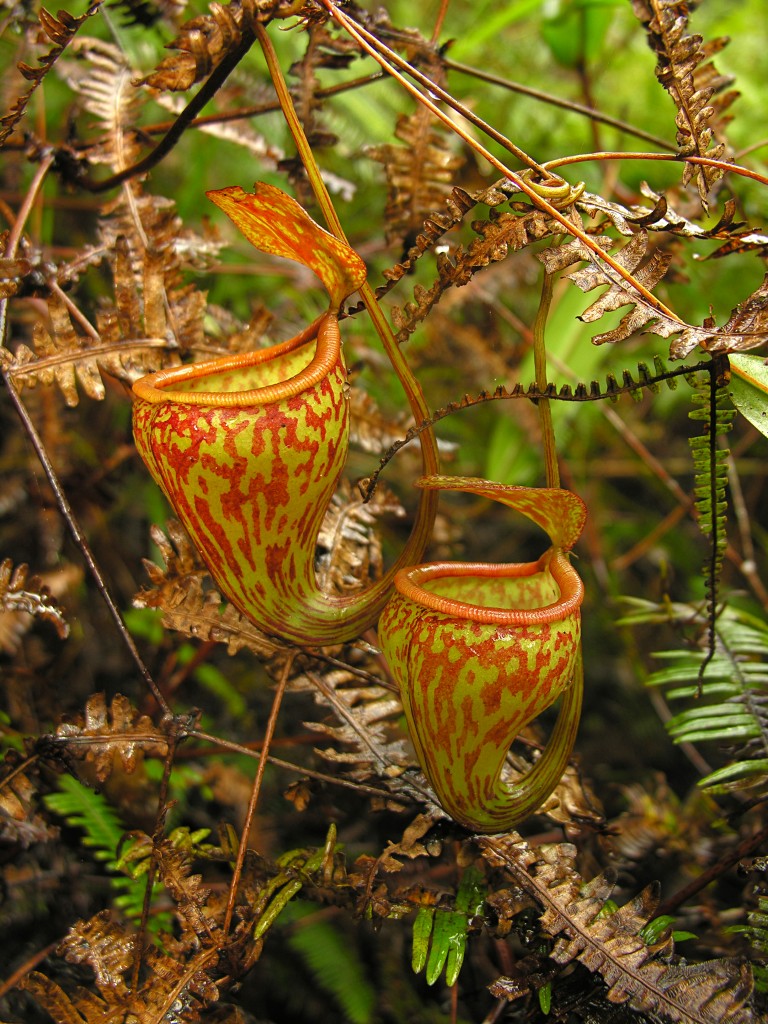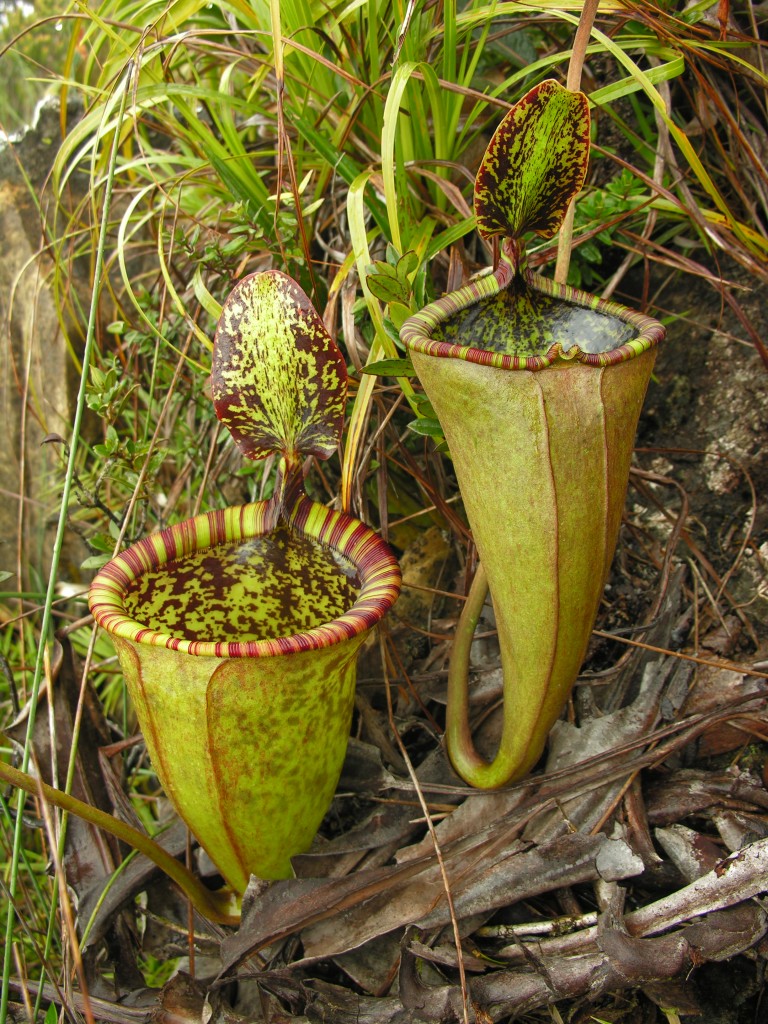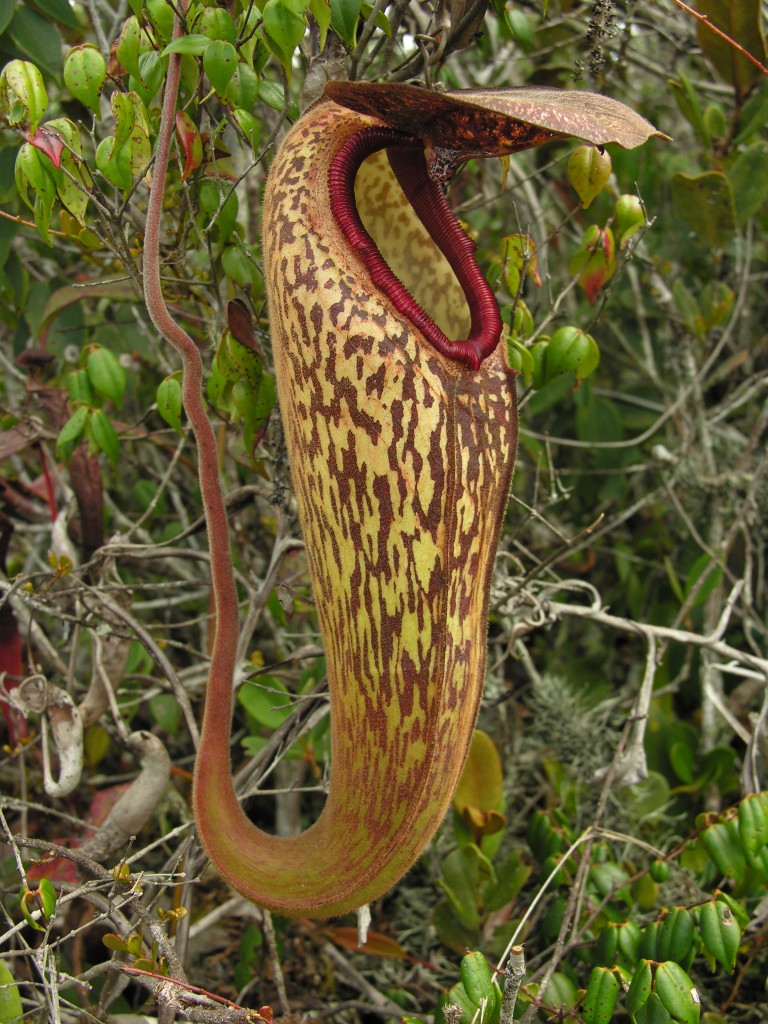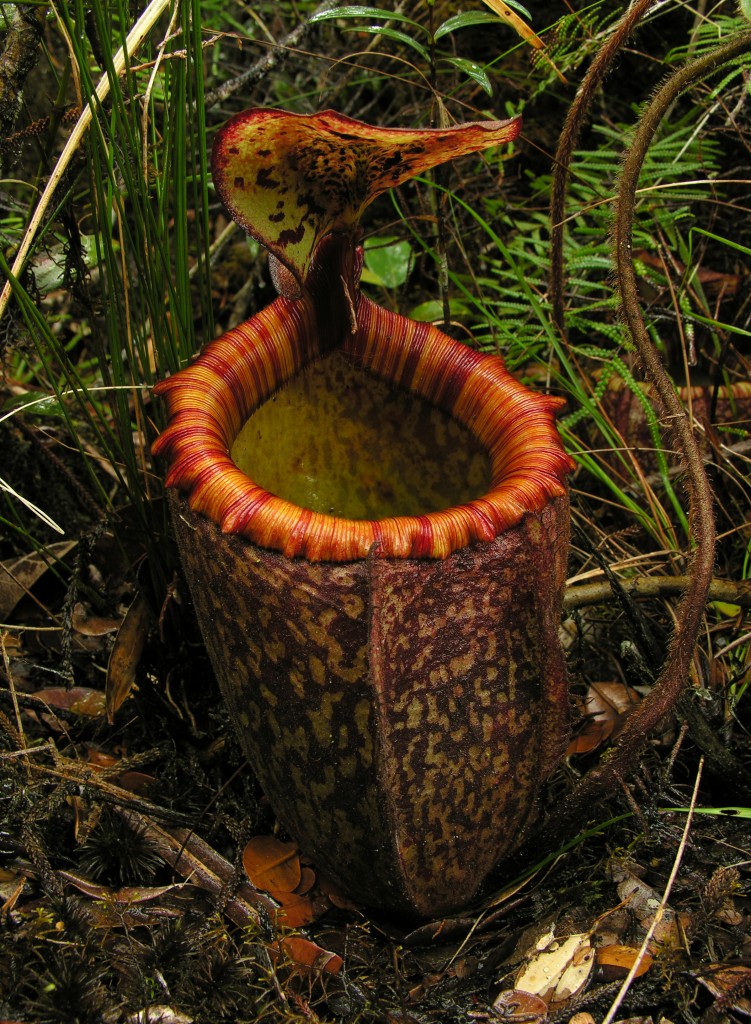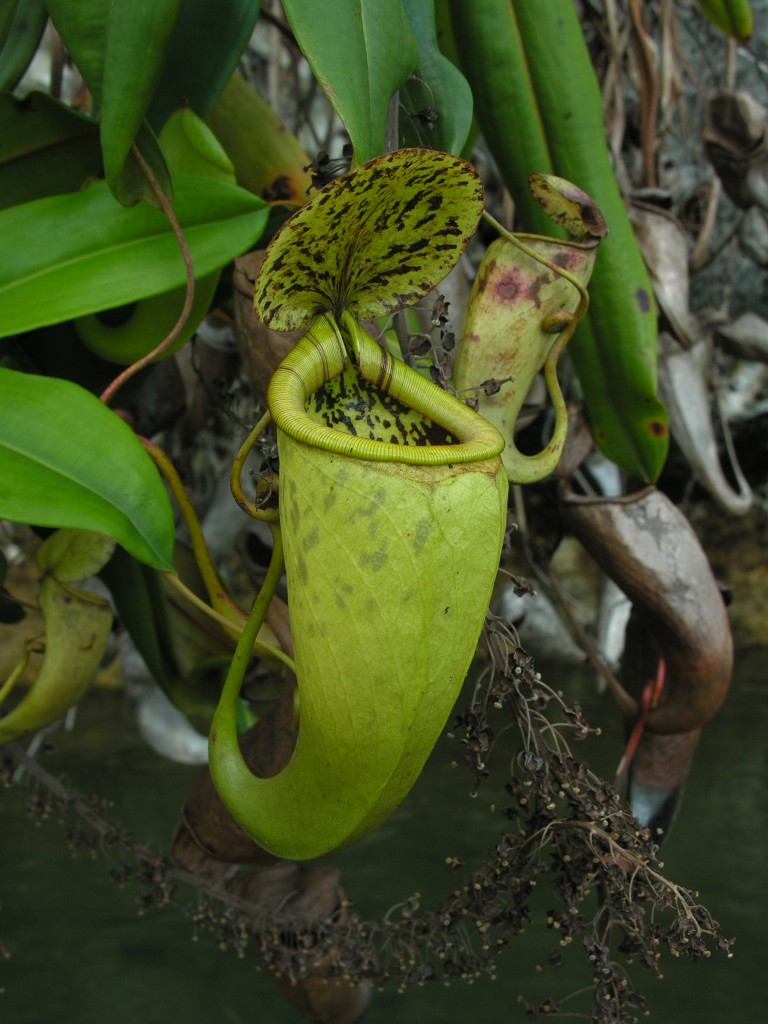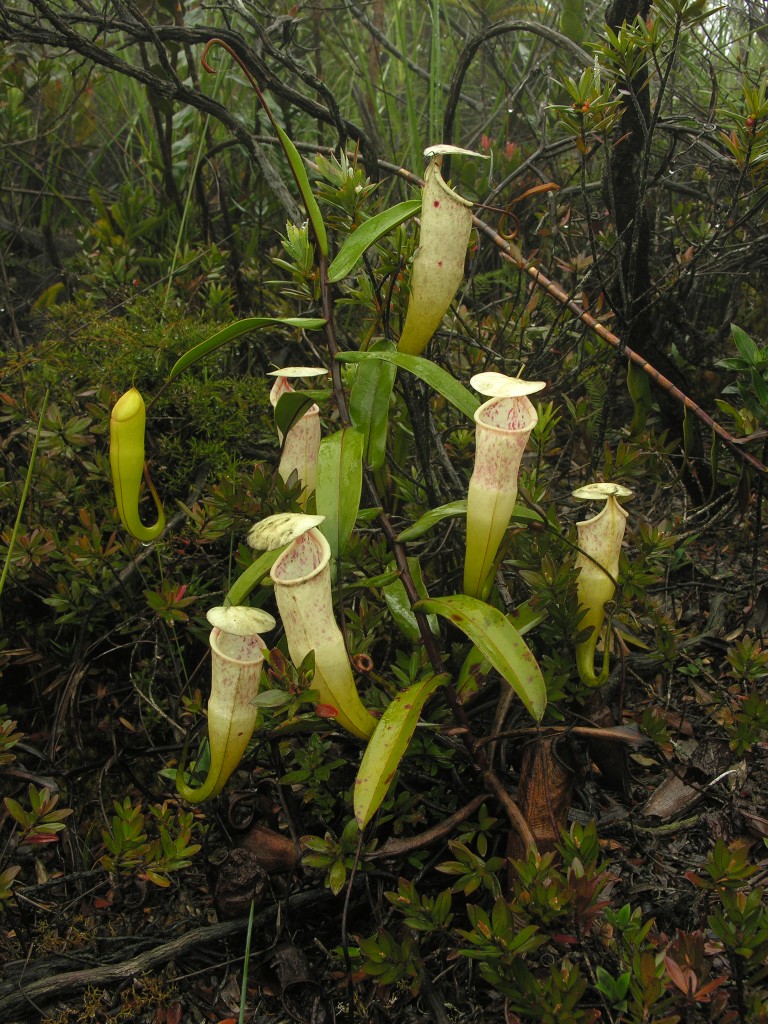Nepenthes pitopangii – Indonesia’s newest and rarest species of pitcher plant
In September 2006, Jonathan Newman, a British wildlife enthusiast, travelled across the Lore Lindu National Park in Central Sulawesi studying the birdlife of that beautiful part of Indonesia. During his travels, Jonathan observed and photographed a single, strange, pitcher plant growing on the edge of a forest in a remote part of the national park. He returned to Britain, and several months later, posted photographs of the plant on the internet in an effort to identify it. By chance, I observed Jonathans photographs, and it was immediately clear that the plant which he had encountered might represent a new species of pitcher plant (Nepenthes), for it differed in all respects from all other recognized species known at that time.
Nepenthes attenboroughii. A new species of giant pitcher plant from the Philippines
In June 2007, I visited the island of Palawan in the south of the Philippine archipelago to study the little known species of pitcher plants (Nepenthes) which occur there. The diversity of Nepenthes on Palawan is very unclear at present and several new remarkable species have been discovered there in recent years. Lying so close to Borneo, yet isolated by ocean, Palawan boasts a magnificently diverse assemblage of plants and animals, yet the activities of various rebel fractions in recent decades have caused this island to remain relatively little visited by botanists and little explored – especially in comparison to other parts of South East Asia. I had the pleasure of traveling to this alluring island with two friends and Nepenthes experts, Alastair Robinson and Volker Heinrich. At an early point in our expedition, we identified Mount Victoria in central Palawan as a mountain of particular interest for us to explore. Mount Victoria is of a suitable altitude for highland Nepenthes and also of the correct geological composition (according to the scant geological survey data of Palawan that exists). We also reasoned that prevailing trade winds could conceivably transport light weight Nepenthes seed across the comparatively short distinct over the Sulu Sea from nearby Sabah, Borneo, where a great concentration of highland Nepenthes (including the largest and most spectacular species of all) famously grow.
Nepenthes aristolochioides and Nepenthes klossii. Two of Indonesia’s most remarkable plants
Two very special species of pitcher plants (Nepenthes) grow in Indonesia. One (N. aristolochioides) is endemic to Sumatra and relatively well known. The other (N. klossii) is found only in the Indonesian province of Papua in New Guinea and is much less well documented. Both are unique for they produce highly specialized pitchers which trap arthropods by use of light.
N. aristolochioides is named after the flowers of Aristolochia (a genus of non–carnivorous vines), to which, the pitchers bare similarity. N. aristolochioides is known from only three locations within the Kerinci Seblat National Park, located in West Sumatra and in the province of Jambi. Unfortunately, this species is critically endangered in the wild, mainly due to poaching and over collection, and it is possibly extinct at one of the locations where it originally grew.
Nepenthes peltata
In 2008, a remarkable new species of pitcher plant was named from the Philippines. The plant is called Nepenthes peltata, and is named because of its peltate leaf structure. Presently, N. peltata is presently known only from the upper slopes of Mount Hamiguitan in Mindanao, although it may have a wider distribution than is currently appreciated, especially since much of the highlands of southern Mindanao remain little explored due continuing separatist violence and conflict.
On Mount Hamiguitan, N. peltata occurs from approximately 865 m to the summit of the mountain, which stands at 1,635 m. It grows terrestrially in mossy upper montane forest, degraded or recovering secondary vegetation, on bare substrate on exposed cliffsides and landslide areas, and on stunted scrub on ridgetops and the upper slopes of Mount Hamiguitan. N. peltata grows terrestrially and forms a short, rigid, upright stem up to 1 m long which grows above or through surrounding vegetation. It is very distinctive from most other pitcher plants, because the upper surface of its leaves is dark green, and the lower surface is usually (although not always) dark red. All parts of the leaves and pitchers are also lined with long, coarse, brown hairs too.
Nepenthes treubiana – one of Indonesia’s most Spectacular Pitcher Plants
After failing to find one of Indonesia’s largest and most spectacular pitcher plants in 2007, I set out again in 2008 to attempt to locate the illusive plant. The species which I sought, is Nepenthes treubiana, a little known pitcher plant which occurs only in New Guinea. The name honours Dutch botanist Melchior Treub who extensively studied the flora of the Dutch East Indies from 1880 until 1909. The plant grows only on remote cliffsides along the coast of New Guinea, but little information exists on the ecology or general appearance of the plant.
In May, 2008, I arrived in Papua, and after meeting a friend, Tommy Mark, set out to find N. treubiana. Observations of the plant had previously been made on the cliffsides of the MacCluer Gulf, but equally records exist for it occurring on the island of Misool, to where I had traveled the previous year and failed to find the plant. The records from the MacCluer Gulf seemed to be more reliable, as that location was where the plant had originally been discovered. Skaityti toliau…
One century ago, the English botanist Henry Ridley traveled to Malaysia and climbed Mount Tahan in (what is now) Pahang. During his climb, Ridley discovered two species of pitcher plants (Nepenthes). He named the first on N. gracillima in 1908, and recorded that it produces long, slender pitchers that are predominantly black mottled with green blotches. Sixteen years later, Ridley described the second species which he encountered, and he named this plant N. alba for it produces smaller, predominantly white pitchers.
During the one hundred years since Ridley’s work, the classification of these two plants has been clouded with errors and confusion. Various botanists have considered the two plants the same species, others mistakenly identified either or both under incorrect names, including N. ramispina, N. bongso and N. singalana. Skaityti toliau…
